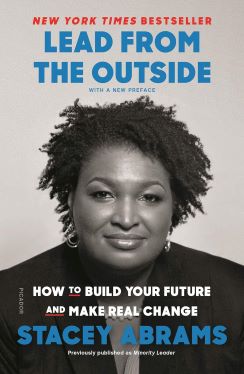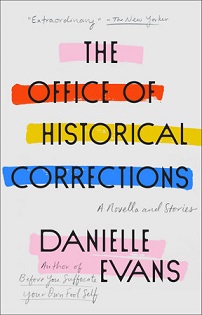How Stacey Abrams’ pragmatic how-to guide rekindled my hope.

I only managed to get one chapter into Stacey Abrams’ Lead from the Outside: How to Build Your Future and Make Real Change before she convinced me to set a new life goal. “Fighting fear demands sacrifice, and anyone who says otherwise is a liar,” Abrams opines. “Confronting fear, breaking past the instinct to avoid pain or threat, cannot be avoided, not if what we want is leadership.”
The book, published in 2018, is about Abrams’ journey in politics and public service, but it’ a testament to the author’s power of persuasion that her advice can extend to all areas of life.
“We permit self-doubt to encourage us to downgrade our accomplishments before someone else does or in an effort to make others more comfortable with our newfound position or success,” she notes, referring not only to campaigning but also to the everyday actions of millions of minorities in the United States.
The 2024 presidential election is tomorrow, and although Abrams isn’t on the ballot, another equally inspiring woman of color is: Kamala Harris. Though Abrams lost the Georgia gubernatorial race during which she wrote Lead from the Outside, she has nevertheless contributed significantly to the national conversation about what it means to bring more diverse voices to the table.
Consider the time between the founding of the United States to the electing of its first mixed-race president (232 years), and then between that election to the voting-in of the first woman, also of mixed race, as vice president (12 years). Now consider this year’s ballot.
More change is coming.
Is Harris perfect — the metric by which some voters seem to be judging? Absolutely not, nor can she be. As Abrams notes:
“[W]e have to internalize our right to make mistakes and to use each error as an entry point to more knowledge. The more we know, the better we get and the more we can control for our destinies and the world around us.”
Furthermore, no candidate will ever be perfect for the entire bloc of voters necessary to elect her, especially when that bloc comprises a broad coalition with widely differing opinions that nevertheless identifies most closely with Democrats.
“Access to real power,” writes Abrams, “also acknowledges that sometimes we have to collaborate rather than compete. We have to work with our least favorite colleague or with folks whose ideologies differ greatly from our own. Not only does this require doing something we may not like, it can also alienate those who share our distaste and see cooperation as a betrayal. But working together for a common end, if not for the same reason, means that more can be accomplished.”
Is Harris better than the alternative? That’s for each voter to decide, but I certainly think so. Consider that her opponent has promoted the baseless, insidious, and dangerous lie that immigrants are eating pets; opined that “somehow, a woman” is performing better than Joe Biden once did in the polls; and promised to jail his political “enemies” if he’s re-elected.
Oh, and his running mate has said of his own mixed-race wife, “She’s not a white person…but I love Usha, she’s such a good mom.”
Harris, on the other hand, says she is “running for president of the United States to continue protecting our freedoms, delivering justice, and expanding opportunity so that every American can not just get by, but get ahead.”
It’s become de rigeur for pundits to proclaim each upcoming election is the most important one in our lifetimes, and for naysayers to guffaw in response. Given the scope of U.S. history, maybe such a declaration is foolish. Still, the choice this year involves widely diverging visions of America’s future. I know which one I prefer.
Mariko Hewer is a freelance editor and writer as well as a nursery-school teacher. She is passionate about good books, good food, and good company. Find her occasional insights of varying quality on Twitter at @hapahaiku.
